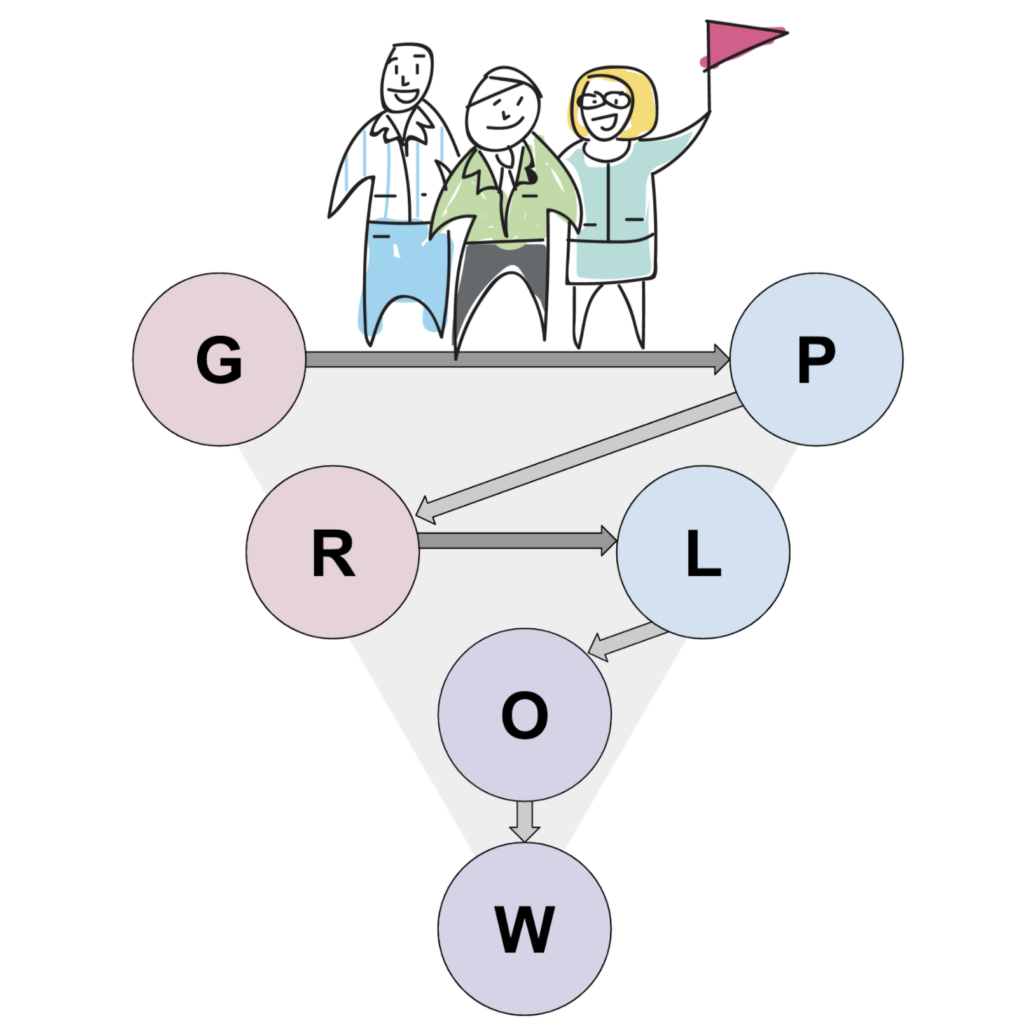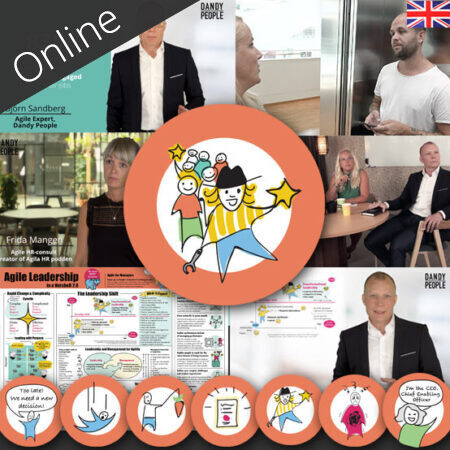
MAINSTREAM MODELS MAY NOT BE CUTTING IT
Mainstream coaching models don’t fully account for the unique processing styles that are prevalent in the systemic thinkers that organizations rely upon for creativity and innovation. As a result, we’re not tapping into and releasing the remarkable creative and innovative potential of today’s talent in roles involving creative knowledge work. Moreover, research suggests that many of these systemic thinkers often have attributes of ADD, ADHD, Asperger’s, or other atypical ways of thinking. Given that everyone falls somewhere on the ADD, ADHD, and Asperger’s spectrum, we posit that unleashing creativity and innovation in today’s workplace requires a coaching model that accounts for multiple processing styles. We all think differently, and we need a coaching model that fits everyone.

In this blog post, we present a model designed to leverage the processing strengths and mobilize the brainpower of today’s entire (organizational) collective, which we’re currently calling the Grow/Plow Coaching Model.
POPULAR COACHING MODELS
All the mainstream coaching models we’ve come across are variants of the popular GROW model, which involves establishing a Goal, examining current Reality, exploring Options, and determining what Will happen next:
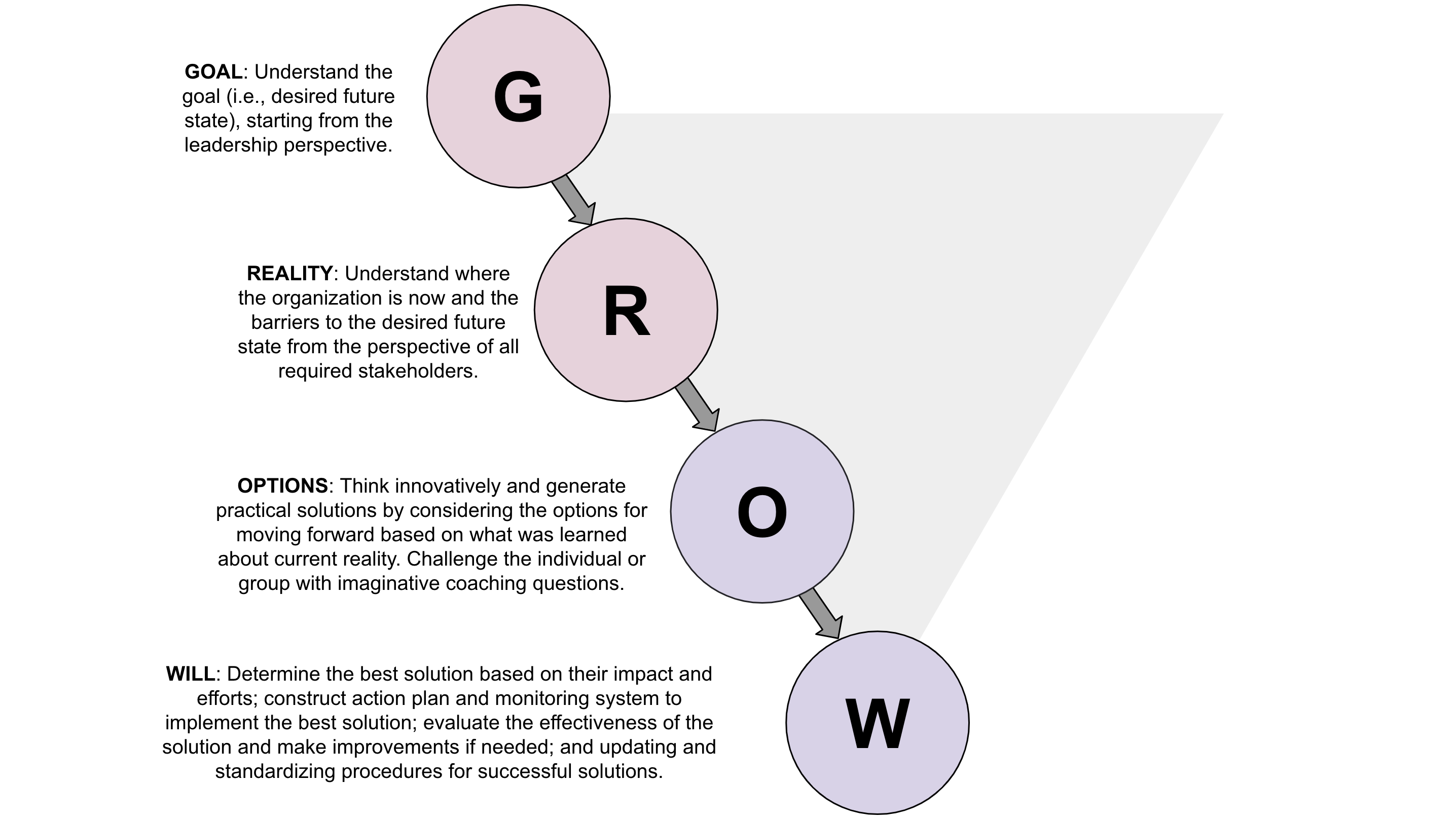
Such approaches presuppose that the coachee’s processing style prefers to start with concepts, such as goals or the big-picture aspirations often discussed while coaching, before diving into the details. This processing style is known as top-down processing and accounts for how most people think. Top-down thinking is driven by cognition where the brain applies what it knows from experience and what it expects to perceive and “fills in the blanks”.
SYSTEMIC THINKERS THINK DIFFERENTLY
Systemic thinkers, on the other hand, often have neurobiological and cognitive attributes that result in a bottom-up processing style that prefers details before concepts. A bombardment of sensory information comes in and their brain takes in these details before moving into conceptualization. This processing style is often connected to what’s known as the Weak Central Coherence deficit. In our experience, such thinkers prefer using problem-solving approaches to coaching that welcome the sensory details underpinning the need for change early in the process where the desired future state can be emergent and shaped by data rather than presupposed at the onset.
THE “PLOW” PROCESS
We took the basic steps involved in problem-solving to create an acronym we call PLOW. The PLOW process involves defining the Problem (i.e., state the problem as clearly as possible and be specific about the situation, behavior, circumstances, and timing that make it a problem); Learning as much as possible about the problem (which includes gathering data like facts, feelings, and opinions); exploring Options; and determining what Will happen next:
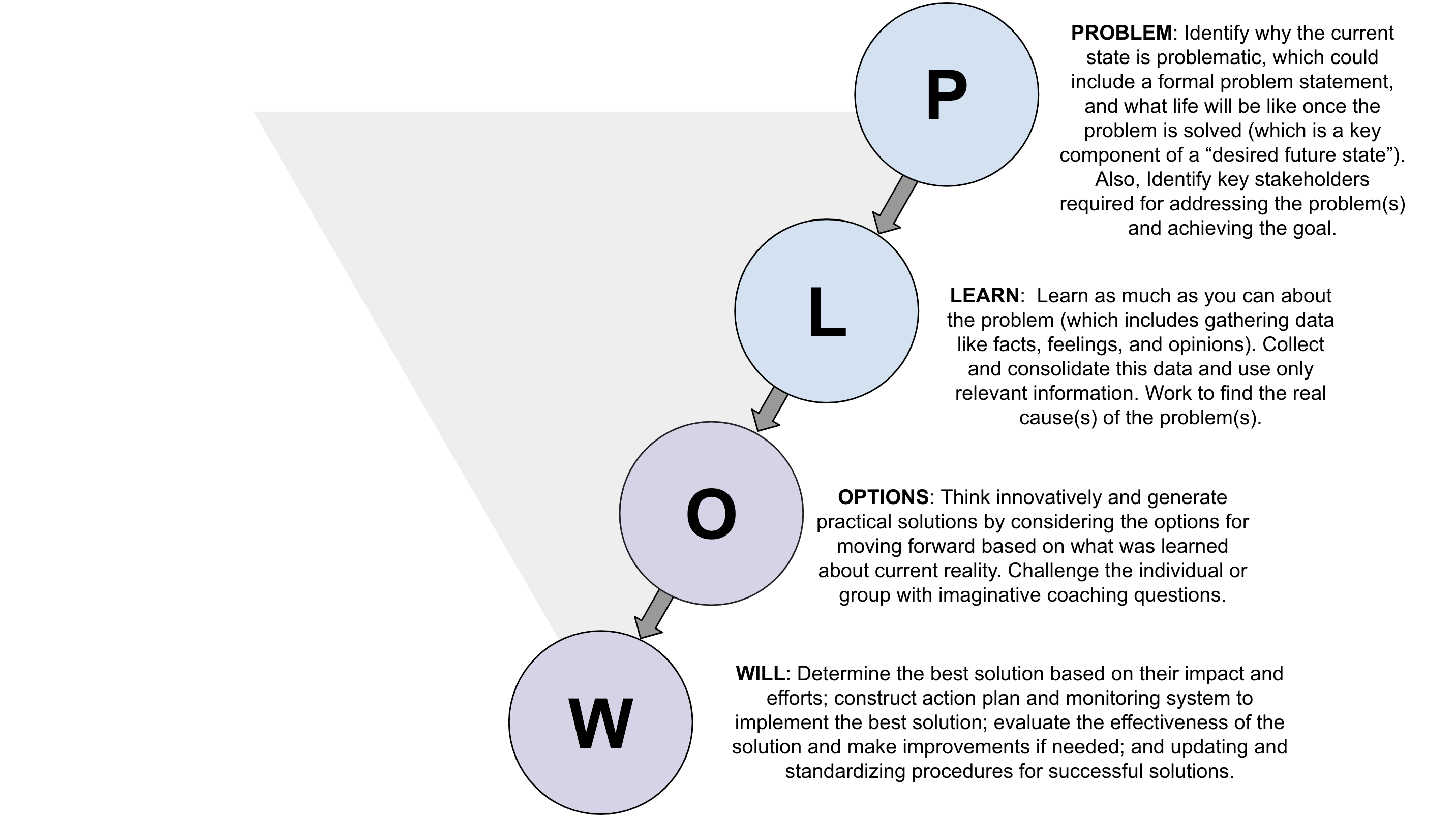
THE GROW/PLOW COACHING MODEL
As you can see on the graphic below, GROW and PLOW naturally overlap at the O and W. PLOW supplements GROW so bottom-up thinking could be integrated into a single coaching model we’re calling the Grow/Plow Coaching Model:
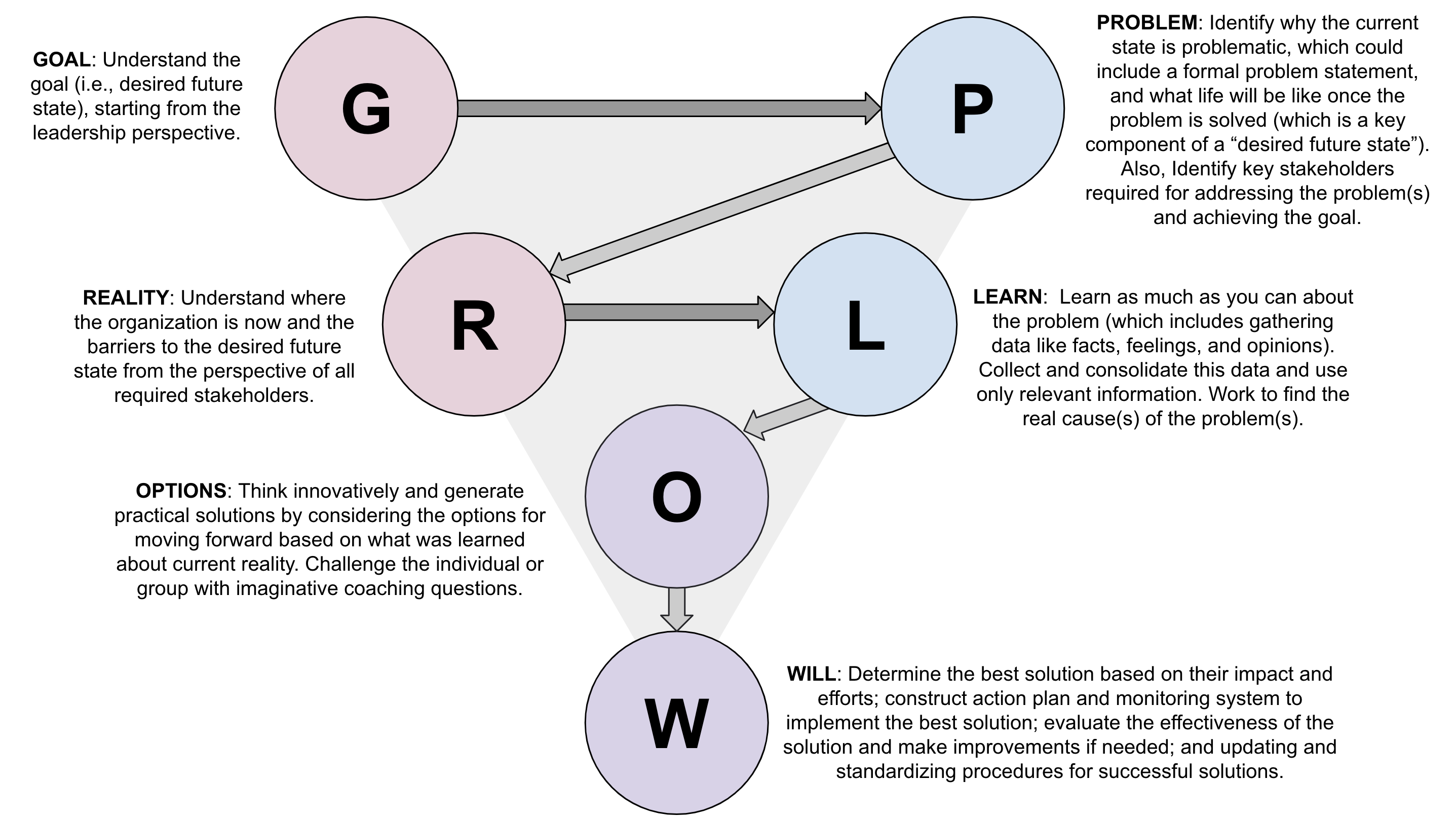
You may notice that the conversation does start with the Goal, irrespective of processing styles. That is because it’s a helpful question to ask at the beginning of the coaching conversation because it lets the coach know whether or not there’s already a well-articulated desired future state to work towards.
THE GROW/PLOW COACHING MODEL IN PRACTICE
When no desired future state can be articulated at the onset, the coach can help the coachee articulate one during the “P” stage where a problem statement is defined by exploring why the status quo is no longer working and then used to articulate “what life will look like once that problem is solved” (which is a desired future state). This approach may strike you as inherently negative, which is intentional. The human brain is biologically predisposed toward registering negative stimuli more readily and also dwelling on these events. This psychological phenomenon explains why it’s so much easier for clients to articulate their problems rather than goals and aspirations. As a coach, the goal is to leverage this energy just long enough to flip the conversation into exploring what life could look like without the problems.
You may also notice that many great coaches naturally follow this process and thereby find success when coaching clients of all processing styles. This is true and absolutely fantastic. The reason we wanted to be intentional about laying out an overt process is so more coaches can be aware of diverse processing styles and give them tactics that could be helpful.
See the most recent case study below for a concrete example of how we’ve used the Grow/Plow Coaching Model in an organizational setting (where it can be easily scaled to individual settings). We included “Coach Notes” for additional details that may interest coaches who are reading this blog post.
Read the case study at a Swedish Insurance Company here
